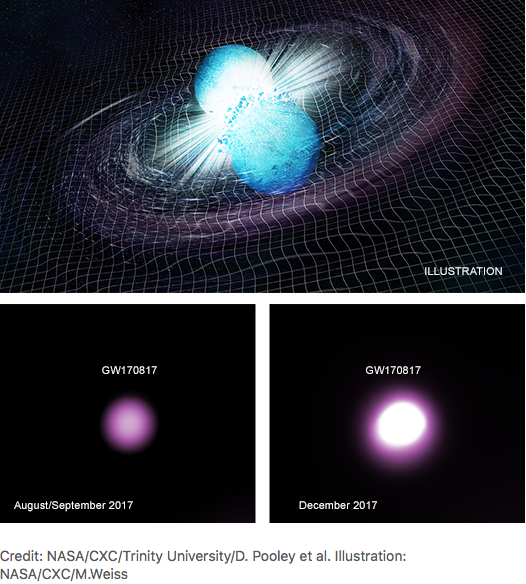
The neutron star merger named GW170817/GRB 170817A took place last August and was detected first by LIGO (Laser Interferometer Gravitational-Wave Observatory) and later confirmed by Virgo, our two gravitational wave detectors. It was the first cosmic event that astronomers were able to observe both light and gravitational waves! Now scientists used X-ray data from NASA’s Chandra X-ray Observatory and gamma rays sent by the Fermi mission to discover that the merging process, probably, also created the lowest mass black hole ever detected!!
Using data from LIGO astrophysicists estimated that the object that was created from the neutron star merger has a mass of about 2.7 times the mass of our Sun. This means that is either the most massive neutron star or the smallest black hole ever detected! However, X-ray data from Chandra did not reveal the presence of a magnetic field and this does not favour the neutron star hypothesis.
If the results are confirmed by follow-up X-ray and radio observations, there would indicate that black holes can be formed in a variety of ways. In this case, two supernova explosions created two neutron stars which in turn, due to their tight orbits, formed a black hole. If instead the neutron star scenario prevail it would challenge theories for the structure and mass of neutron stars!
As Dr. Bruce Grossan, a co-author of the relevant study said: “What an exciting time to be alive, to see instruments like LIGO and Chandra showing us so many thrilling things nature has to offer!”
Publications: Pooley et al. 2018
Source: Chandra
